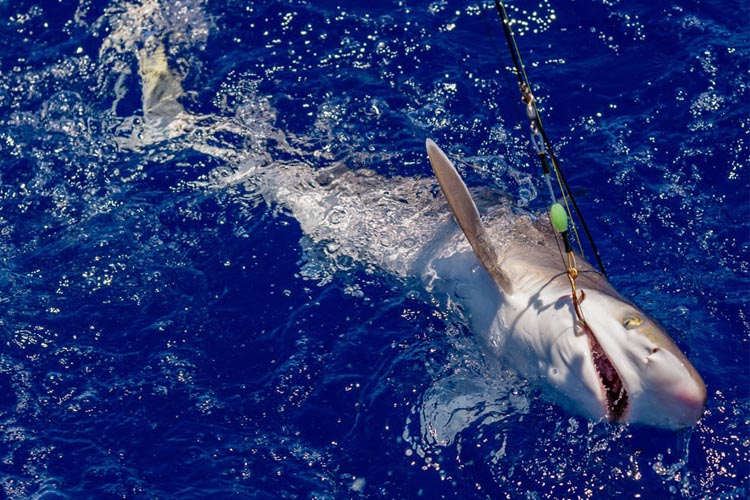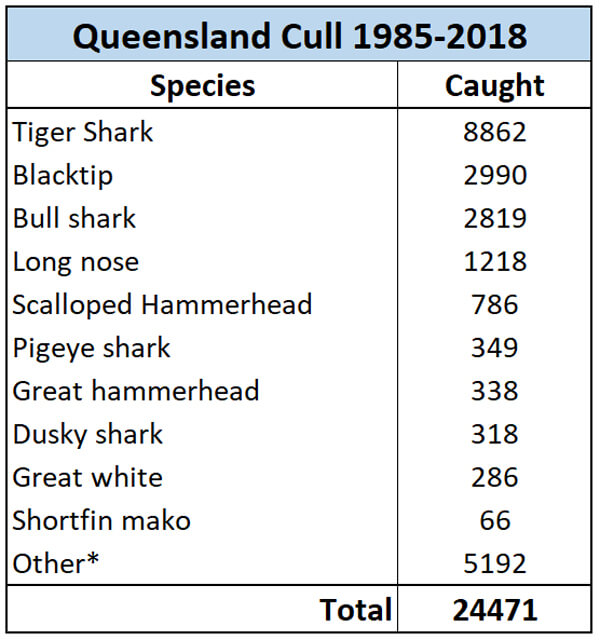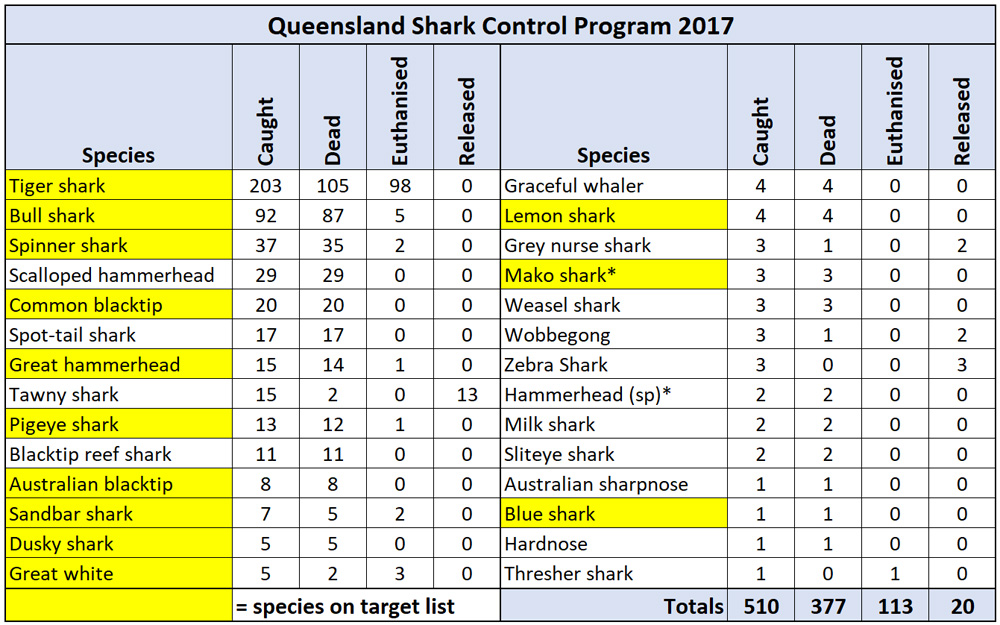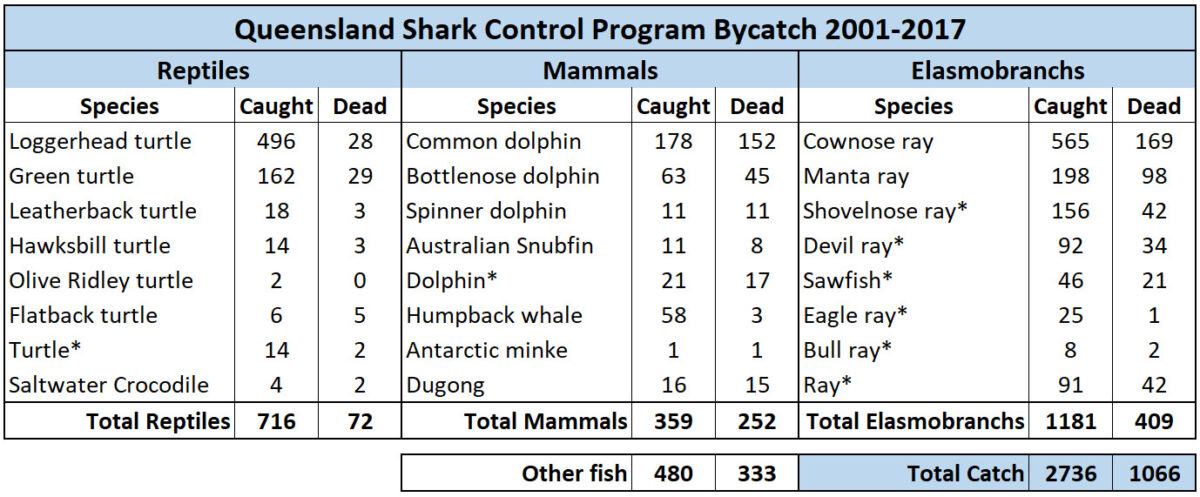
The banning of lethal shark culling in Queensland, Australia, was announced early last week and hailed as a success on the road to eliminating the capture of sharks to prevent fatal shark ‘attacks’ on humans.
The ban was the result of a legal challenge brought against the Queensland Department of Agriculture and Fisheries by conservation group the Humane Society International (HSI).
Many people believed, however, that the ruling did not go far enough, as the 173 drumlines used to capture sharks in Great Barrier Reef Marine Park would have remained in place. But, in a surprise announcement on 4 April, The Fisheries Minister announced a ‘temporary’ suspension to the use of the drumlines, with their hooks to be removed with immediate effect.
The Administrative Appeals Tribunal (AAT) had ordered that the 19 species targeted for by the Queensland shark control programme could no longer be automatically shot and killed. Instead, all sharks must be released alive, although euthanasia was still permissible ‘when a shark is unlikely to survive release due to its condition or an injury, or which cannot be safely removed alive due to weather conditions or hooking location,’ according to the ruling. Larger sharks such as great whites, tigers and bull sharks are to be tagged for research and monitoring purposes.

The drumlines will have their hooks removed as a result of the authorities lacking the resources to comply with the ruling. ‘The AAT handed down a decision yesterday which imposes new permit conditions, commencing immediately, which necessitate that significant changes be made to the shark control programme operations within the marine park,’ said Fisheries Minister Mark Furner.
‘At this time, our contractors do not have the appropriate capabilities to immediately comply with these new conditions,’ he said. ‘As a result, the decision has been taken to temporarily suspend the programme within the boundaries of the Great Barrier Reef Marine Park.’
Queensland’s shark control programme has been in place since 1962. During that time, it is estimated that more than 50,000 sharks have been caught. Data available for download from the Queensland government website shows that 24,741 sharks from a wide range of species were caught between 1985 and 2018. Although data in the downloadable documents regarding the fate of the sharks is incomplete, a dataset from 2017 (below) shows only 20 sharks were released alive from a total of 510 sharks that were caught in nets or drumlines.

*Species not identified by source material: Shark Control – Sharks Caught By Type 1985/86 to 2017/18

Even though the initial ruling by the AAT would have prevented the 19 target species from being shot after being caught, the statistics clearly show that had the drumlines remained in place, a large number of sharks would still have died. The 2017 dataset (above) shows that 74 per cent of all sharks caught on drumlines died before being discovered, rising to 86 per cent when tiger sharks (the primary target) are not included in the count, many of which are not on the list of target species.
Equally horrific is the amount of other species that have been caught and killed as bycatch. Between 2001 and 2017, using the datasets available from the government’s website, 2,736 animals were recorded as having been caught by the shark control equipment. These included 284 dolphins of different species (233 of which died), 712 turtles from six different species, 198 manta rays (98 of which died), 53 humpback whales (three dead) and 16 dugongs, only one of which survived. Since 1962, according to a 2015 Sea Shepherd report, the true figure could be almost 27,000 animals caught as bycatch since 1962.

It must be remembered that the removal of the drumlines may well only be temporary. The Queensland Department of Agriculture and Fisheries plans to appeal the ruling, and even should the appeal fail, rolling out SMART drumlines will take time, and monitoring others on a daily basis will still result in the death of a huge number of sharks and other marine mammals. Some species of pelagic shark are ‘obligate ram ventilators’, meaning that they have to keep swimming in order to breathe, or at least remain facing into the prevailing current. Marine mammals, trapped underwater, will swiftly drown.
A statement on the HSI website reads that the organisation ‘is disappointed that the Queensland Government has not accepted the Tribunal’s findings and plans to appeal the decision.’
‘This judgement gives the Queensland Government the opportunity to move to modern non-lethal shark control methods which are more effective for bather protection,’ said Lawrence Chlebeck, Marine Campaigner at HSI. ‘Instead of wasting time on a Federal Court appeal, the Queensland Government should be investing in the latest non-lethal technology freely available for swimmer safety. Personal shark deterrent subsidies, alert systems, drone technology, better education and signage are the way forward for Queensland,’ he said.
AAT rulings at a glance:
(Download the full document here)
- The current permit is to be varied to include a condition requiring the permittee (Great Barrier Reef Marine Park Authority) to carry out the Shark Control Program in a manner that avoids, to the greatest extent possible, the lethal take of shark species.
- The target shark list is to be removed from the current permit.
- The current permit is to be varied to ensure that the euthanasia of sharks caught on the drum lines is only to be undertaken on animal welfare grounds, specifically when a shark is unlikely to survive release due to its condition or an injury, or which cannot be safely removed alive due to weather conditions or hooking location.
- The current permit is to be varied to ensure sharks are attended to as soon as possible when captured on drum lines, preferably within 24 hours.
- The current permit is to be varied to ensure all tiger, bull and white sharks caught on drum lines are tagged, using best available technology, before being released so that their movements may be monitored and researched.
- The current permit is to be varied to ensure tagged sharks be relocated offshore, where possible, and not at site of capture.
- The current permit is to be varied to ensure SMART drum lines are trialled and implemented on a progressive basis as soon a reasonably possible.
- The current permit is to be varied to include a condition that requires research to be conducted into alternative non-lethal shark control measures.
- The current permit is to be varied to include a condition requiring research be conducted into the tiger shark population.
- New Huawei Watch Ultimate 2 features underwater messaging - 9 October 2025
- Canada’s Marineland park threatens to euthanise 30 beluga whales - 8 October 2025
- Michael ‘M2’ Menduno dies following stroke - 6 October 2025


